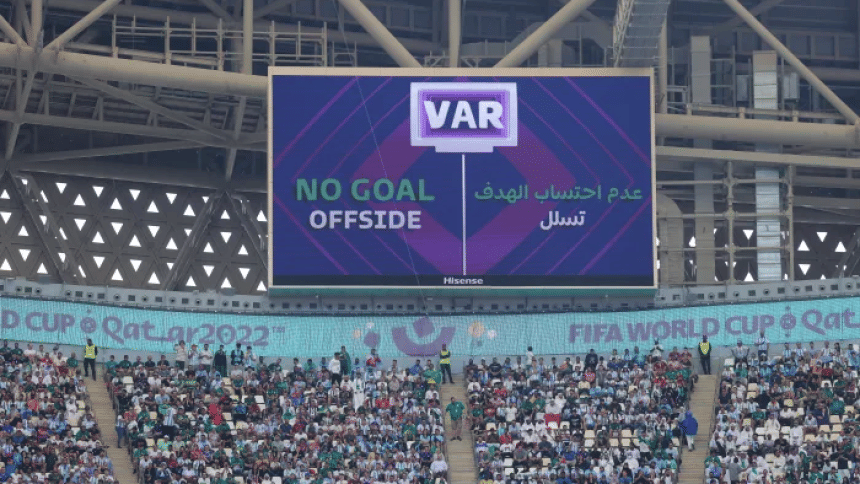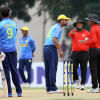Here’s everything you need to know about VAR technology

The FIFA World Cup 2022 is now taking place in Qatar, so unless you've been living under a rock, you've probably heard of it. The VAR technology, however, is one of the items that is grabbing attention at the 2022 FIFA World Cup.
You might already be aware of VAR in football, but are you familiar with all of its regulations? In this article, we'll give you all the information you need to know about the video system and how and when it can affect the referee's judgement in crunch situations.
First things first, VAR stands for Video Assistant Referee and makes use of video technology to add more accuracy to the on-field referee's decisions.
A Video Assistant Referee (VAR) and three other assistant video assistant referees make up the VAR team. Top FIFA video match officials make up the entire staff of video assistant referees.
The best camera views are chosen and provided by three playback operators.
With the help of VAR technology, crucial information can be relayed to the on-field referee through an earpiece by video officials who have access to numerous pitch-facing cameras.
In case of an evident error or severely missed incidences, the VAR may alert the on-field referee, who may then review the situation with the video referees. The initial judgement can either be upheld or confirmed after that. The game will begin again if there were no violations. VAR is being utilised in four match-changing circumstances - goals, penalty decisions, straight red card incidents, and player identification. While VAR may suggest overturns or other actions, the referee ultimately has the final say.
Moreover, this will be the first World Cup where semi-automated offside technology is being deployed as part of the video review system, according to the international governing body of football. The new technology, which has been trialled at previous international games, uses 12 dedicated cameras positioned beneath all the roofs of the eight stadiums where the World Cup matches are being hosted and track the ball and each player in real-time. The official match ball 'Al Rihla' also has a sensor that transmits information to the video operating room 500 times per second, thereby transmitting precise kick point information.

The semi-automated offside technology system makes use of the 12 cameras positioned throughout the stadium to follow the ball and 29 different player data points. The technology will determine each player's precise location on the field at all times by monitoring the data points 50 times per second. When an offside is found, the offside video operator will receive a notification.
The lead VAR will then manually verify the kick point and the offside line and inform the on-field referee of what they observed. FIFA emphasises that this procedure will just take a few seconds, thereby ensuring the free-flowing nature of the game.
Importantly, once a decision has been reached, a 3D animation will be shown to the fans watching the match from the comfort of their couch as well as the displays within the electrifying atmosphere inside the stadiums. According to FIFA, this animation will exactly detail the right position of the players' limbs at the precise instant the ball was played.
This component of VAR technology is equally crucial among others. Fans will now be able to move in line with the assistant referee more successfully because it was previously extremely difficult for them to visualise offside rulings.
This won't happen right away, though; it will happen at the next play stoppage after the referee makes the decision.
Apart from these, goal-line technology is being used at the FIFA World Cup for the third straight competition to judge if the ball fully crossed the line for a goal. The technology is using 14 high-speed cameras to transmit a signal to the referee's watch within one second of the ball crossing the line if a goal was scored, relieving the VAR of having to deal with such high-pressure circumstances.
The idea behind VAR technology is to make the game more competitive by allowing the referee to review calls to determine whether a goal was scored by an offside player or not. For fans, it is a fantastic bit of technology when it helps their side, but when it gives a verdict against them, it is considered to be the worst innovation ever. Hence, the much-debated VAR technology will continue to make its impression as we progress through the group stage of the FIFA World Cup and head onto the knockout rounds.

 For all latest news, follow The Daily Star's Google News channel.
For all latest news, follow The Daily Star's Google News channel. 










Comments